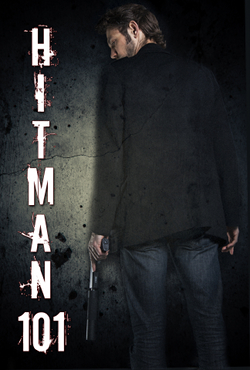Review: Martyrs of Love (1966)
Cast: Lindsay Anderson, Jitka Cerhová, Denisa Dvoráková
Director: Jan Nemec
Country: Czechoslovakia
Genre: Comedy | Fantasy
Editor’s Note: The following review of Martyrs of Love is a continuation of Rowena’s Spotlight on the Czechoslovak New Wave.
Jan Němec’s feature film Diamonds of the Night (1964) marked the debut of several things: one, Němec as a director and two, the collaboration of Němec and Ester Krumbachová. Krumbachová was one of the instrumental figures of the Czechoslovak New Wave for her distinct aesthetic sensibility. Her particular aesthetic and design sensibility was spread out across several aspects of production on a number of films on which she worked: art director, costume and production designer, and writer. Though she did not attend FAMU (she studied at the Academy of Applied Arts), upon entering the Barrandov Studios in the early 1960s she came to establish herself as a notable costume designer. Diamonds of the Night was one of her first films. What followed were collaborations with some of the more salient names that reference the Czechoslovak New Wave: Věra Chytilová, Jaromil Jireš, and Vojtěch Jasný, among others. With Němec, Krumbachová embarked on a personal relationship (they were married for a brief period of time) and a professional one that engendered three films.
Jan Němec’s feature film Diamonds of the Night (1964) marked the debut of several things: one, Němec as a director and two, the collaboration of Němec and Ester Krumbachová. Krumbachová was one of the instrumental figures of the Czechoslovak New Wave for her distinct aesthetic sensibility.
 Martyrs of Love is the third collaboration between Němec and Krumbachová (as co-writer and costume designer). The number three describes not only their collaboration but also the film’s structure: it consists of three unrelated segments that are nevertheless linked together through the themes of love, dream, and encounter. On the whole, they constitute a charming, wistful, and whimsical work indicative of both Němec and Krumbachová’s artistic sensibilities and references (e.g. Luis Buñuel, 1920s/1930s European avant-garde, Czechoslovak Poetism, and silent film comedy). The film is also very much a musical showcase-of-sorts: the first segment has a strong 1920s Jazz Age ambience and stars one of the most popular singers of the time, Marta Kubišová; and the second segment features another one of the most popular singers of the time, Karel Gott, and composer Jan Klusák. In fact, music and song often take precedence over dialogue across all three segments, with songs from the likes of Eva Olmerová (considered one of the best Czech jazz singers ever). In the first segment, one finds only three lines uttered. Put another way, music and song function take the place of dialogue in all three segments. The three segments are also linked together insofar as a progression from actuality to fantasy worlds takes place.
Martyrs of Love is the third collaboration between Němec and Krumbachová (as co-writer and costume designer). The number three describes not only their collaboration but also the film’s structure: it consists of three unrelated segments that are nevertheless linked together through the themes of love, dream, and encounter. On the whole, they constitute a charming, wistful, and whimsical work indicative of both Němec and Krumbachová’s artistic sensibilities and references (e.g. Luis Buñuel, 1920s/1930s European avant-garde, Czechoslovak Poetism, and silent film comedy). The film is also very much a musical showcase-of-sorts: the first segment has a strong 1920s Jazz Age ambience and stars one of the most popular singers of the time, Marta Kubišová; and the second segment features another one of the most popular singers of the time, Karel Gott, and composer Jan Klusák. In fact, music and song often take precedence over dialogue across all three segments, with songs from the likes of Eva Olmerová (considered one of the best Czech jazz singers ever). In the first segment, one finds only three lines uttered. Put another way, music and song function take the place of dialogue in all three segments. The three segments are also linked together insofar as a progression from actuality to fantasy worlds takes place.
it consists of three unrelated segments that are nevertheless linked together through the themes of love, dream, and encounter. On the whole, they constitute a charming, wistful, and whimsical work indicative of both Němec and Krumbachová’s artistic sensibilities and references
 Its quick editing, shots filled to the brim with movement, and vigourous rhythm à la René Clair’s avant-garde short film Entr’acte (1924) make of “Temptations of a White Collar Worker” the most energetically paced segment of the film. It follows a young man as he goes from day to night and night to day in search of pleasure to stave off the alienation of work. He moves from one club to another and encounters different types of musical energy, from which he somehow always remains removed. Even in the beginning, shots of people’s movements on the streets contrast with those of the young man alone, gazing and thinking; from his apartment, shots of him looking are paired with shots of people seen through windows. But with his bowler hat, white gloves, suave coattails, and umbrella, he defies isolation and goes out and cuts a handsome if comical figure, especially in a brief sequence where he mimics playing the instruments of a jazz band. He also encounters a woman with whom he goes home and attempts seduction. This segment is absolutely pleasurable precisely because of the jazz heard throughout.* The music gives a marvelous dimension to the kinetics of the images and vice-versa; when Olmerová and her scat singing appears, it is difficult not to get carried away by the music and, in turn, engage with the images in a be-bop kind of way.
Its quick editing, shots filled to the brim with movement, and vigourous rhythm à la René Clair’s avant-garde short film Entr’acte (1924) make of “Temptations of a White Collar Worker” the most energetically paced segment of the film. It follows a young man as he goes from day to night and night to day in search of pleasure to stave off the alienation of work. He moves from one club to another and encounters different types of musical energy, from which he somehow always remains removed. Even in the beginning, shots of people’s movements on the streets contrast with those of the young man alone, gazing and thinking; from his apartment, shots of him looking are paired with shots of people seen through windows. But with his bowler hat, white gloves, suave coattails, and umbrella, he defies isolation and goes out and cuts a handsome if comical figure, especially in a brief sequence where he mimics playing the instruments of a jazz band. He also encounters a woman with whom he goes home and attempts seduction. This segment is absolutely pleasurable precisely because of the jazz heard throughout.* The music gives a marvelous dimension to the kinetics of the images and vice-versa; when Olmerová and her scat singing appears, it is difficult not to get carried away by the music and, in turn, engage with the images in a be-bop kind of way.
Music also sets the tone and pace for the second segment, “Anastasia’s Reveries.” But this time the tone is sombre and pensive, as the young woman Anastasia indulges in several reveries while on a train. Anastasia imagines herself assisting in a high society wedding, with the groom played by none other than actual singer Gott. Gott sings a rather solemn song to begin the ceremony, inspiring Anastasia’s romantic feelings for him. Faced with rejection, her reverie continues with a chance encounter with an officer, who appears in a horse-drawn carriage with two nuns. Though the part with Gott begins with the Surrealist, René Magritte-like visuals of men with bowler hats, the segment fully moves into Surrealist fantasy with the soldier. In fact, anyone who has seen Buñuel’s Belle de Jour (1967) cannot help but be vividly struck by the similarities between Anastasia’s encounter with an officer who has his assistants tend to her and dress her up for a ritual in a country estate and Sévérine’s encounter with the duke who has her play a part as his deceased relative in his country estate. The segment concludes with Anastasia on the train, but with the details of her fantasy and actuality all mixed up. Despite the bowler-hatted men and the portion with the officer, of the three segments “Anastasia’s Reveries” has the most lukewarm impact.
The last segment, “Orphan Rudolph’s Adventure,” may be the most endearing. Like “Anastasia’s Reveries,” the story begins through music. Rudolf (played by actual ballet dancer Josef Koníček) walks in an empty street (as is so often the case with Němec’s characters) and hears the sounds of clapping and music playing. He finds the source of the music and climbs through a wall to discover a small garden party. Unlike “Anastasia’s Reveries,” the plunge into fantasy here is much more intoxicating, literally. For the garden party folks are, or comport themselves like, elegant and affectionate drunks. They call out to Rudolf, mistaking him for a man named Jakub, to join them inside the house. There they proceed to strip and re-clothe him, treat him like an old friend, get him in a conga line, and make himself at home. Though the use of montage to enliven the segment’s rhythm is largely absent here until towards the end, the sequence of Rudolf stepping on the running boards of one car after another (as creative shorthand for his job as a mechanic) is wonderfully kinetic. Rudolf steals away from the house during a lull, but when he attempts to locate the garden party once again he is unable to find it, as if it had all been a dream.
Watching Martyrs of Love is a bit like plunging into reverie oneself. For sure, some parts and details are more interesting, persuasive, and memorable than others—such as the fetish for hats, the terrific music, Miroslav Ondríček’s cinematography, the garden party’s zaniness. But the film is a very spirited collaboration of Czechoslovak artists from different fields, which aptly characterises the Czechoslovak New Wave in general.
* Though the Communist regime effectively banned the performance of jazz in 1948, musicians continued to play jazz throughout the fifties and into the sixties. Unsurprisingly, jazz became strongly associated with revolt in postwar Czechoslovakia. By the time the 1960s rolled around, jazz came of age and 1964 saw the first Prague International Jazz Festival.
















 Review: The Lucky One (2012)
Review: The Lucky One (2012) Review: Lolita (1962)
Review: Lolita (1962) Spotlight on the Czechoslovak New Wave: The Cremator (1968)
Spotlight on the Czechoslovak New Wave: The Cremator (1968) Review: Battleship (2012)
Review: Battleship (2012) Subversive Saturday: Work (1915)
Subversive Saturday: Work (1915)

